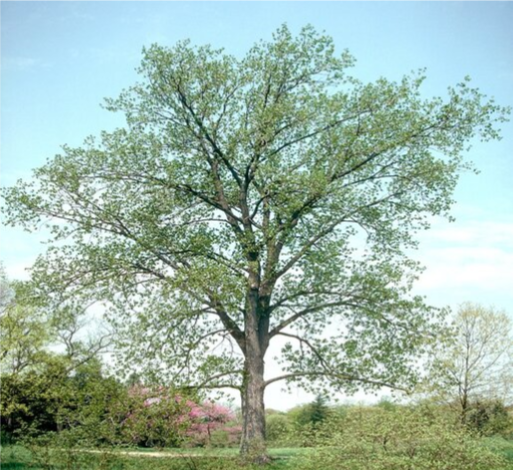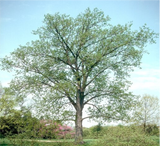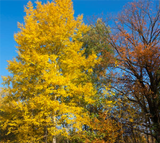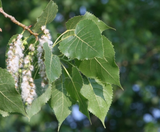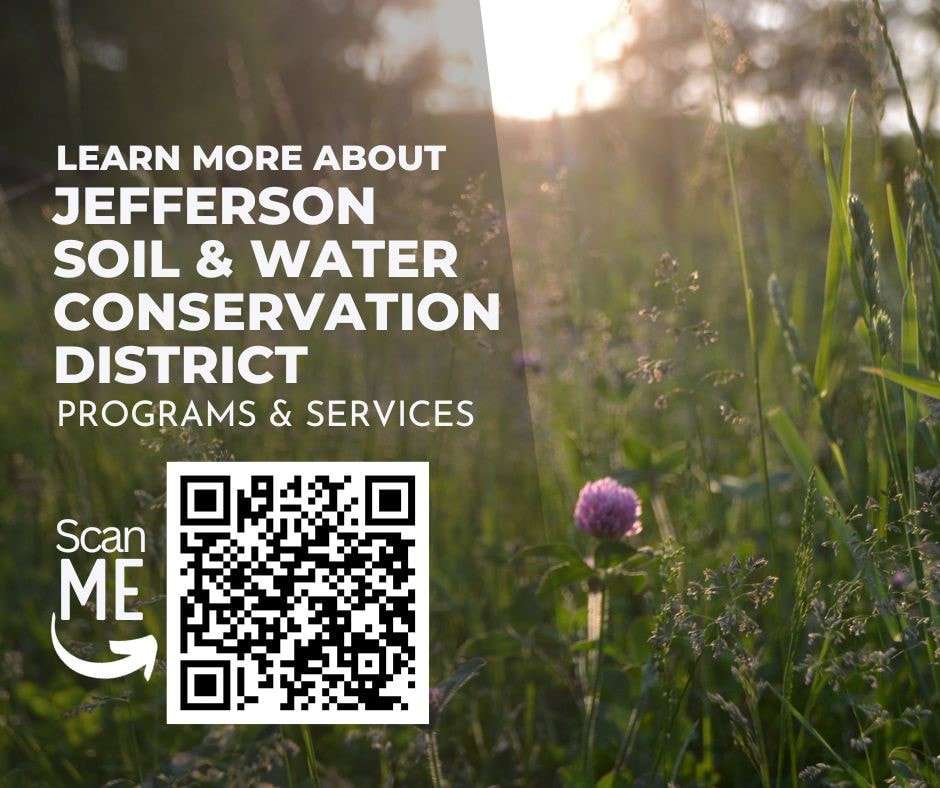- 2024 Native Trees
- >
- Native Trees
- >
- Eastern Cottonwood (Populus deltoids)
Eastern Cottonwood (Populus deltoids)
Height: 50 to 75 feet
Spread: 35 to 60 feet
Bloom Time: March to April
Bloom Type: Insignificant. Red (Male) Green (Female)
Growth Rate: Fast
Sun: Full sun
Water: Medium to Wet
Attracts: Birds, Butterflies, Wildlife
Native to: Jefferson County
As Bing Crosby crooned in “Don’t Fence Me In”: “Let me be by myself in the evenin' breeze
And listen to the murmur of the cottonwood trees”. Much like the song the tree is best utilized in open areas and not fenced into urban landscapes.
Eastern Cottonwood trees are often an overlooked and under utilized tree that deserve some attention. The trees are a large and fast growing species that can tolerate wet areas. The leaves are unique and provide great depth to the landscape with their glossy dark green color and triangular and coarsely toothed shape. The tree produces a deep yellow color in the fall.
The tree gets its name from its most notable feature, the densely tufted seed whose fine white hairs give it the appearance of the cotton blowing through the air. The Eastern Cottonwood is a dioecious species with separate male and female plants. Only the females produce the trademark cottony seeds. The trees offered in the Jefferson Soil and Water Conservation District Native Plant Sale are unsexed trees, so it is recommended to buy multiple trees.
The Eastern Cottonwood was a popular species among the Lenape, Mingo, and Shawnee tribes that lived in Appalachian Ohio, as the long straight trunks and soft wood allowed dugout canoes to be easily created.
Honey Bees discovered that the properties of cottonwood resin could also benefit them. Bees collect the resin from the outside of Eastern Cottonwood buds, mix it with wax and apply it to the walls of their nest cavity. This “bee glue” is referred to as propolis, and, as it turns out, serves as an antimicrobial barrier as well as a sealant. Various bacteria, fungi and other harmful microbes are kept at bay by the resin contained in propolis. It also directly reduces two diseases of Honey Bees, chalkbrood and American foulbrood. The tree is host to 277 species of butterflies and moths ■

